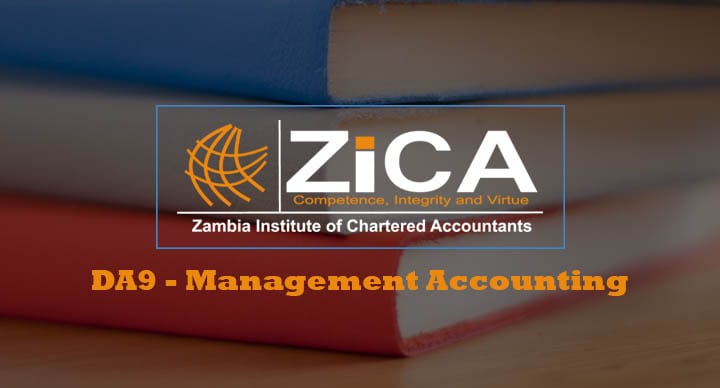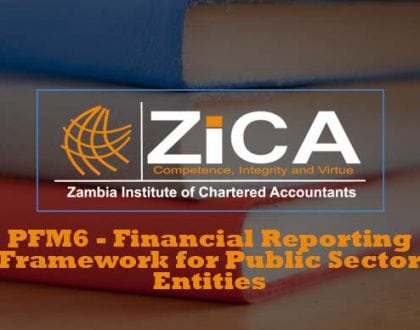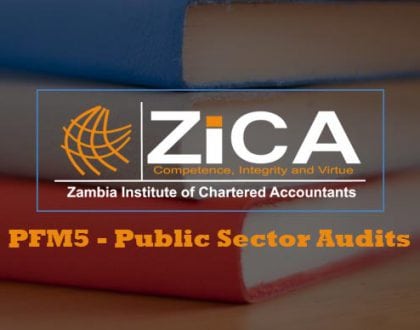DA9-Management Accounting
No access plans exist.

Course Features
Course Details
DA9-Management Accounting
Learning outcomes
On successful completion of D9, students should be able to:- Explain the importance of management accounting for decision making and contrast it with financial accounting
- Apply relevant costing principles to different scenarios and explain the use of relevant costing in short-term decision making
- Apply the cost volume profit model and critically evaluate its value in decision making
- Describe and evaluate different pricing strategies
- Analyse cost and revenue variances and recommend appropriate responses to identified variances
- Prepare those budgets commonly used in practice and explain the behavioural implications of using budget variances for performance evaluation
- Apply alternative modern management accounting techniques and explain when each is appropriate
- Evaluate an appropriate working capital strategy for a company
| Topic | Weighting |
| Introduction to Management Accounting | 5% |
| Short-term decision making | 10% |
| Cost volume profit analysis | 10% |
| Costs and pricing decisions | 10% |
| Standard costing and variance analysis | 20% |
| Budgeting and budgetary control | 25% |
| Modern management accounting techniques | 10% |
| Working Capital Management | 10% |
Content
- Introduction to Management Accounting
- Scope of Management Accounting
- Explain the scope of management accounting
- Explain the role of a Management accountant
- Management Accounting compared to Financial Accounting
- Compare management accounting with financial accounting
- The role of Management Accounting in decision making
- Explain the importance of management accounting for decision making
- Scope of Management Accounting
-
Short-term decision making
- Decision making process
- Identify the principles used in short term decision making
- Explain why cost accounting data may not be suitable for decision making
- Relevant costing concept
- Explain the concept of relevant costing in the context of decision making
- Calculate relevant costs and revenues
- Distinguish relevant costs and revenues from irrelevant costs and revenues
- Describe the assumptions made when applying relevant costing
- Short-term decisions
- Identify what the limiting factor is when there are scarce resources and choose an appropriate techniques
- Determine the production plan that will maximise contribution when an organisation is restricted by a single limiting factor, including where the organisation faces ‘make or buy’ decisions.
- Determine whether a product should be further processed or not
- Apply relevant costing to different business decisions
- Determine whether an organisation should close down a part of the business, which could be a product line, department or other activity
- Determine whether a special one off contract should be accepted
- Determine the minimum price that should be quoted for a particular one-off product or contract.
- Considerations for qualitative factors
- Identify non-quantifiable factors to be taken into account when applying relevant costing during decisions
- Decision making process
-
Cost volume profit analysis
- Nature of short term planning decisions
- Explain the concept of CVP analysis
- Practical applications of the CVP model
- Calculate the following measures o Breakeven points o Contribution/sales ratio
- Margin of safety
- Target profits
- Interpret the CVP measures
- Apply CVP to situations involving a single product
- Explain the principles of multiple product CVP analysis
- Prepare and interpret breakeven and profit/volume charts
- Calculate the following measures o Breakeven points o Contribution/sales ratio
- Assumptions underlying the single CVP model
- Describe the assumptions made when using CVP analysis and explain how these assumptions limit its use of decision making
- The accountant’s Cost Volume Profit (CVP) Model and Comparison with the economist’s CVP Model
- Distinguish accountants and economists view of CVP analysis
- Usefulness and limitations of the model
- Explain the usefulness and limitations of the CVP analysis
- Nature of short term planning decisions
-
Costs and pricing decisions
- A Pricing in an organisation
- Explain factors to consider when pricing
- Calculate the price using the demand function
- Cost plus pricing
- Explain how demand influence the price of a product
- Explain how factors other than demand can influence the price of a product
- Calculate prices using full cost-plus
- Marginal cost plus pricing
- Calculate prices using marginal cost-plus pricing
- Other pricing methods
- Calculate prices using Activity based costing
- Calculate prices using Standard costing
- Pricing strategies
- Explain suitable pricing methods for specific situations, taking into account the objectives of the organisation
- A Pricing in an organisation
-
Standard costing and variance analysis
- Variance analysis for costs
- Calculate the following variances
- Material total, usage and price
- Labour total, efficiency and rate
- Idle time
- Variable overhead total, efficiency and expenditure o Fixed overhead total, volume (efficiency and capacity) and expenditure
- Calculate the following variances
- Variance analysis for revenue
- Calculate the following variances
- Selling price (or sales price)
- Sales volume profit
- Calculate the following variances
- Variances and control
- Explain the causes of the variances
- Explain how management use various analysis for control purposes
- Suggest appropriate responses to identified variances
- Operating statements using absorption costing and marginal costing
- Prepare an operating statement reconciling budgeted profit to actual profit under
- Standard absorption costing
- Standard marginal costing
- Prepare an operating statement reconciling budgeted profit to actual profit under
- Advanced variances
- Calculate the following variances
- Material mix and yield
- Sales mix and quantity
- Planning and operational
- Calculate the following variances
- Variance analysis for costs
-
Budgeting and budgetary control
- Introduction to budgeting: meaning and usefulness, benefits and limitations, the budgeting process
- Explain how organisation use budgets
- Describe the administration involved when budgeting
- Describe the budget preparation process
- Types of budgets
- Prepare functional budgets, cash budgets and a master budget
- Explain the importance of forecasting techniques in the preparation of budgets
- Explain how a capital expenditure budget is prepared and its importance
- Explain what a fixed budget is and how it is used by management
- Describe how rolling budgets are used by management
- Prepare and interpret flexible budgets are used for control purposes
- Behavioural implications of budgeting and budgetary control
- Explain the behavioural implications of using budgets for control and performance evaluation
- Explain the use of budgets for motivational purposes
- Application of Information technology in budget preparation
- Describe and evaluate the following budgetary systems:
- Incremental budgeting
- Zero based budgeting
- Programme planning and budgetary systems (PPBS)
- Recommend which of the above budgetary systems may be appropriate in specific situations
- Explain why PPSB is suitable for public sector and not for profit organisations and why traditional budgeting techniques are often suitable.
- Describe and evaluate the following budgetary systems:
- Introduction to budgeting: meaning and usefulness, benefits and limitations, the budgeting process
-
Modern management accounting techniques
- Throughput accounting
- Compare and contrast the ‘traditional’ and the ‘modern’ manufacturing philosophy
- Explain the theory of constraints and the concept of throughput accounting
- Calculate throughput measures and throughput accounting ratios and use them for decision making
- Target costing
- Describe the steps involved in target costing and calculate target costs
- Life cycle costing
- Describe the stages of the product life cycle
- Explain the concept of life cycle costing and how it can be used to maximise returns
- Explain the effect of life cycle costs on an organisations marketing strategies
- Backflush accounting
- Describe the backflush method of accounting and explain how it simplifies the accounting process
- Kaizen costing
- Explain the concept of kaizen costing
- Throughput accounting
-
Working Capital Management
- The nature, elements and importance of working capital
- Describe the nature of working capital and identify its elements
- Identify the objectives of working capital management in terms of liquidity and profitability
- Explain the conflict between liquidity and profitability
- Explain the central role of working capital management in financial management.
- Working capital investment
- Explain the cash operating cycle
- Explain and apply relevant accounting ratios, including:
- inventory turnover ratio, average collection period and average payable period o sales revenue/net working capital ratio
- Calculate the level of working capital investment in current assets and discuss the key factors determining this level, including:
- the length of the working capital cycle and terms of trade
- an organisation’s policy on the level of investment in current assets o the industry in which the organisation operates
- Identify if a company is overtrading
- Working capital financing
- Describe the different working capital financing strategies that an organisation may follow, including:
- the distinction between permanent and fluctuating current assets
- the relative cost and risk of short-term and long-term finance
- the matching principle
- the relative costs and benefits of aggressive, conservative and matching funding policies
- Describe the different working capital financing strategies that an organisation may follow, including:
- Inventory management
- Explain the use of relevant techniques in managing inventory, including the Economic Order Quantity model and Just in-Time techniques
- Calculate the optimum order size using the EOQ model
- Receivables management
- Explain the use of relevant techniques in managing accounts receivable, including (only basic calculations will be tested in this area):
- assessing creditworthiness
- managing accounts receivable
- collecting amounts owing
- offering early settlement discounts
- using factoring and invoice discounting
- Explain the use of relevant techniques in managing accounts receivable, including (only basic calculations will be tested in this area):
- Payables management
- Explain the use of relevant techniques in managing accounts payable, including:
- using trade credit effectively
- evaluating the benefits of discounts for early settlement and bulk purchase
- Explain factors affecting credit worthiness
- Explain the use of relevant techniques in managing accounts payable, including:
- Cash management
- Explain the various reasons for holding cash
- Explain the cash management models, such as the Baumol model and the MillerOrr model (calculations will not be examined, students are expected to have the basic understanding of these techniques)
- Explain the use of relevant techniques in managing cash, including:
- preparing cash flow forecasts to determine future cash flows and cash balances
- assessing the benefits of centralised treasury management and cash control
- investing short-term
- The nature, elements and importance of working capital
Format of the exam
| Section | Marks |
| Section A: 2 compulsory questions, 25 marks each | 50 |
| Section B: Any 2 out of 3 questions, 25 marks each | 50 |
| TOTAL | 100 |
Recommended reading
- ZiCA D9 Study Manual
- Atkinson, A A, Kaplan, R S, Matsumura, M, and Young, S M, Management Accounting: Information for Decision-Making and Strategy Execution, 6th edition, FT Prentice Hall, 2011
- Drury, C, Management and Cost Accounting, 7th edition, Cengage Learning EMEA, 2008
This course does not have any sections.





